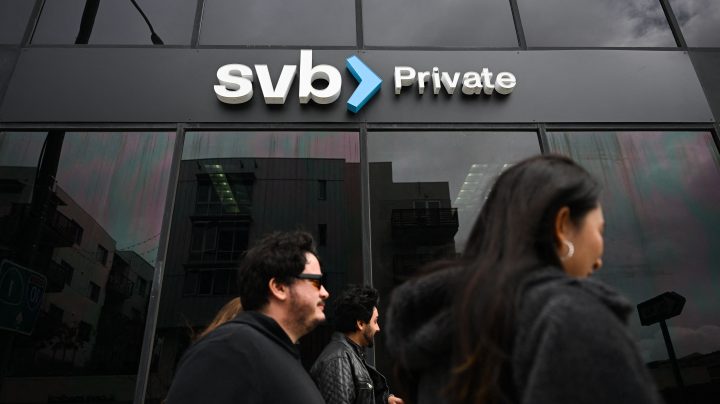
Who are bank examiners, and what do they do?
Who are bank examiners, and what do they do?

By May 1, the Federal Reserve will release its own investigation into what happened at Silicon Valley Bank. The San Francisco Fed was the branch in charge of monitoring SVB.
A key question will be the role of bank examiners, the rank-and-file government employees whose day-to-day job is to monitor a bank’s safety and soundness.
Michael Stevens was a bank examiner for the state of Iowa’s banking regulator in the 1990s. He’s got a favorite story from those days. A bank he was examining was threatening to foreclose on a commercial property lot.
“I couldn’t figure out why the bank was being so aggressive in the collection. A couple payments past due, gets current, goes delinquent again, all of sudden the bank was all over the guy,” Stevens said.
Stevens did some digging and found the reason on his own. But he wanted to hear the bank’s explanation first.
“[The banker] goes, ‘We’re just tired of dealing with him, and we’re just gonna foreclose, and we’re just done dealing with him,'” Stevens said. “And I said, ‘It doesn’t have anything to do with this drawing that I found of your new bank building on this lot?'”
The bank wanted to build its new headquarters on the property it was aggressively foreclosing on.
Stevens is now president of the Graduate School of Banking at Colorado and said the job of a bank examiner is different than what you might think.
“It’s not sitting down going through a bunch of paper, making a decision and going home,” Stevens said. “It’s an art business, not a science.”
Bank examiners work at the Federal Reserve regional banks, the Federal Deposit Insurance Corp., the Comptroller of the Currency and state agencies. Different agencies regulate different banks, depending on where the bank is chartered and the size and structure of the bank. Multiple agencies with multiple bank examiners can regulate the same bank simultaneously.
Rank-and-file bank examiners tend to skew younger, with lower-level examiners often recently out of undergraduate or graduate school. A background in finance is common but not required.
Smaller community banks typically receive annual point-in-time exams — basically, a balance sheet physical. Larger banks have much more ongoing supervision.
Lee Reiners, a lecturing fellow at the Duke Financial Economics Center, joined the New York Fed as a bank examiner in the early 2010s, monitoring the likes of JPMorgan Chase and Goldman Sachs.
At the time, Reiners was part of a small battalion of examiners physically present at those banks four days a week.
Teams of examiners were assigned to various banking risks: capital adequacy, asset quality, management quality. Reiners was on the liquidity team — basically, making sure the bank has enough cash to fund itself day to day.
“So every day, you’re going to look at how much the bank gained or lost in overall deposits. You’re also going to flag any particularly large deposits, you know, added or withdrawn, from a specific client,” said Reiners.
Examiners would also periodically check the composition of depositors. Different types of depositors from different industries would be good, whereas similar depositors from the same industry vulnerable to the same risks would be bad.
Reiners was in daily communication with the bank’s treasury staff. If there was a problem, the first call would likely be to them.
“If you’re a hard ass, that’s not going to necessarily be productive,” Reiners said. “But you also can’t totally be enthralled with the bank and its leadership and everything they say.”
If a bank doesn’t take corrective action on its own, examiners do have some powers to try to compel them to fix a potential problem. They can issue “matters requiring attention” or “matters requiring immediate attention” — essentially, official warnings that tell banks, “Hey, you have to fix this ASAP.”
Silicon Valley Bank reportedly received several of those warnings. But you know who didn’t get a copy of a “matter requiring attention”? The depositors.
“So, the fear is that if the public were to be made aware of an issue, you or I would come to the conclusion that maybe we’ll just go look at another bank,” said David Cotney, former Massachusetts commissioner of banks. “But if everybody just decides to do that, it brings down the bank.”
In a twist of banking regulation irony, mere warnings that a bank could be vulnerable to a bank run could actually trigger a bank run.
Also confidential are what are known as CAMELS scores, annual composite ratings of a bank’s overall safety and soundness. Bank examiners looking at different aspects of a bank’s operations rate a bank 1 to 5, with 1 being the best and 5 being the worst.
If regulators find that a bank continues to ignore the problem they’ve identified, they may ultimately resort to a public consent order that forces the bank to redress the issue.
A lot of what examiners do is reactionary — the bank does something and examiners say, ‘Hey, that looks problematic. Let’s do something about that.’
“The underlying assumption of regulation is that you’re not telling the bank how to act or not act on every single activity. It’s still a private market,” Cotney said.
There’s a lot happening in the world. Through it all, Marketplace is here for you.
You rely on Marketplace to break down the world’s events and tell you how it affects you in a fact-based, approachable way. We rely on your financial support to keep making that possible.
Your donation today powers the independent journalism that you rely on. For just $5/month, you can help sustain Marketplace so we can keep reporting on the things that matter to you.


















